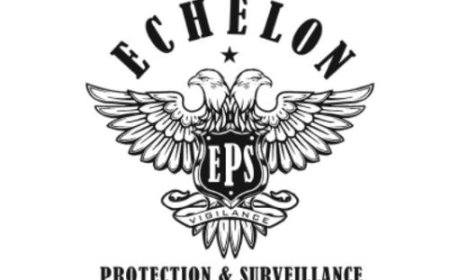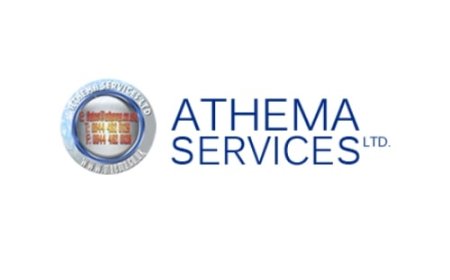How the Medium iOS App Development Team Works Effectively With Legacy Code?
The Medium iOS app development team works effectively with legacy code by emphasizing modularization, thorough code reviews, and incremental refactoring to ensure stability while enabling continuous improvement.

When you open the Medium app on your iPhone, you are seeing the culmination of years of hard work, constant change, and ongoing improvements. The iOS development team at Medium has the difficult job of keeping the app running smoothly and without problems while also dealing with a lot of old code.
They have come up with good plans and a thoughtful way of thinking that lets them maintain the app stable while still adding new features regularly. They carefully maintain their code, make little modifications, and put a lot of emphasis on usability and performance.
I hope that by sharing their thoughts, I can show how careful planning and working together keep the Medium app up to date and dependable. This mix of keeping old foundations while always coming up with new ideas is a great example of how mature programs can change without losing quality or user experience.
Understanding Legacy Code in the Medium iOS App
Legacy code isn't simply old software; it's the building blocks of a full application. Some elements of the programming for Medium's iOS app are several years old and were made with older versions of Swift or even Objective-C.
Even while the team has to keep the code up to date with new versions of iOS app development company and add new features that consumers demand, these old parts nevertheless support the app's main functions. The team calls any component of the software that hasn't been significantly rewritten or refactored recently but still works "legacy code."
This code is reliable, but it can be fragile, hard to test, and hard for current developers who don't know where it came from to understand. When you maintain and improve legacy code, you have to find a balance between respecting its original structure and making changes to match the needs of today's users and technology.
Key Challenges of Maintaining Legacy Code on iOS
Working with legacy code presents many challenges. The Medium iOS team often faces these issues:
-
Technical debt: Over time, quick fixes and shortcuts add up, making the code harder to maintain.
-
Compatibility: iOS updates regularly introduce new features and deprecate old APIs, so legacy code can break or become inefficient.
-
Balancing priorities: The team needs to add new features but also fix bugs and improve old code, which takes time.
-
Collaboration: Different team members have different levels of familiarity with legacy parts, causing knowledge gaps.
They dont shy away from these challenges. Instead, they accept that legacy code requires attention and plan accordingly.
Mediums Approach to Working Effectively With Legacy Code
The team doesn't want to have to rewrite all of the code at once. Instead, they make steady, slow progress by working on modest, doable sections of the software. They start by choosing certain parts to refactor, improve, and test, and then they slowly replace old code with new code.
Their top objective is making code easier to read. Whenever they work on old code, they try to make it clearer and easier to grasp. Before implementing any modifications, they add automated tests to make sure that existing features work. This helps them find errors early.
They also carefully add new Swift features to new code instead of making everyone upgrade their entire codebase all at once. This step-by-step method lets the team keep the program stable while making steady progress on enhancements. This greatly lowers the danger of introducing serious issues along the way.
Tools and Practices Used by Mediums iOS Team
They dont rely on guesswork. The team uses a set of tools and habits that help them keep track of changes and maintain quality:
-
Code reviews: Every change, especially around legacy code, goes through a thorough peer review.
-
Continuous integration (CI): Automated builds and tests run whenever new code is pushed, helping catch errors early.
-
Static analysis tools: These tools scan the codebase for potential bugs, style inconsistencies, or deprecated code.
-
Documentation: The team documents tricky legacy parts and shares knowledge during meetings or in written form.
By following these practices, they avoid introducing new problems while cleaning up old code.
Case Studies: Successful Legacy Code Refactoring at Medium
They have some impressive examples where careful refactoring led to noticeable improvements:
-
Refactoring the article rendering engine: This core component had old Objective-C code mixed with early Swift. They gradually rewrote sections into Swift and simplified the logic, which made future feature additions easier.
-
Improving the networking layer: By rewriting parts of the code to use newer Swift concurrency features, they reduced bugs related to asynchronous tasks without breaking existing behavior.
These successes proved that steady, focused work on legacy code pays off. They learned that:
-
Small, targeted changes reduce risk.
-
Writing tests first prevents regressions.
-
Clear documentation supports team members unfamiliar with legacy code.
Team Culture and Communication Around Legacy Code
The Medium team doesn't see legacy code as something to avoid; they see it as a chance to work together and progress. They strongly encourage both junior and experienced developers to work together on legacy problems, which creates a collaborative environment.
Regular sessions for exchanging information help the whole team grasp portions of code that are hard or complicated. This openness makes engineers feel confident asking questions and learning about old systems without worrying about what would happen. The team also celebrates every enhancement made to the old code, seeing these efforts as real accomplishments rather than just maintenance.
This favorable attitude regarding old code helps prevent team members from feeling alone and keeps the app development moving forward without stopping. In the end, their culture of working together, learning, and valuing old codes turns what could be a cause of aggravation into a source of motivation for constant growth and team unity. This kind of thinking makes them stand out.
Advice for Other iOS Teams Managing Legacy Code
Here are some useful recommendations for working with old code based on what they've learned. First, don't rush to rebuild everything at once. Instead, make tiny, gradual modifications to lower the danger. Writing tests before making changes is very important since it helps find bugs early and keeps things stable.
It's also crucial to make code easy to read. Well-structured code reduces errors and facilitates the onboarding of new team members. Using automated tools like static analyzers and continuous integration pipelines can make code much better and more consistent.
Team members need to talk to one other openly so that maintaining old code is a shared duty instead of a secret burden. Last but not least, always put stability first by not making modifications that could disrupt functionality that are already there. If you follow these rules, working with old code will be easier and less scary, which will make the process of making things better go more smoothly over time.
Conclusion
The iOS development team at Medium shows us how to deal with old code in a calm and methodical way. They don't make large changes that could make the software less stable. Instead, they make minor changes to old code over time, with the help of effective testing and teamwork. Their culture promotes inquiry and shared responsibility, so old code doesn't make people angry; instead, it helps them move forward.
Therefore, I recommend trying their method if you are working with legacy code in your own iOS projects. Start small, test everything well, and create a team culture that encourages people to ask questions and share what they know. The way may be slow, but it will get you to a healthier, easier-to-maintain app.
Lastly, I want to know what you've been through. What does your team do with old code? What techniques have worked for you and which ones haven't? Please leave your comments, questions, or suggestions below so we can keep talking and help each other make better apps.


































